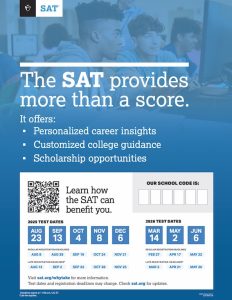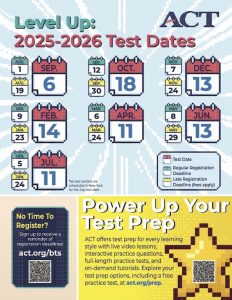Following the COVID-19 pandemic, many colleges and universities—especially in California—temporarily suspended the requirement for the SAT. Due to closures and mandates, many testing centers shut down, making it nearly impossible to take the test.
Although they were originally intended to be temporary, the two largest university systems in California, the University of California (UC) and California State University (CSU), have permanently suspended standardized testing in the admissions process. The UC system became test-blind in fall 2021, meaning it will not consider SAT or ACT scores even if students submit them. The CSU system followed suit shortly after in 2022.
While there is less incentive for California students to take the SAT, there is still some value in taking it.
My Opinion
Students should take the SAT because it is becoming more important in the college admissions process, and more institutions are returning to test-optional or test-required.
I have taken the SAT twice, and did not score the way I wanted. Fortunately, taking the SAT has no risk; I can choose to send it to schools if I want to. A few schools I am applying to include: UCLA, UC Davis, Cal Poly SLO, and Texas A&M—all schools that are test-optional or test-blind. I mostly took it for fun, but I will also earn merit scholarships for submitting it.

Out-of-state and Private Schools
Many out-of-state colleges still require the SAT, citing grade inflation as the reason for needing a standardized test. While GPA can differ from school to school, the SAT is the same test nationwide. Several Prestigious schools have recently reinstated testing requirements, including Harvard, Yale, Brown, and Dartmouth. MIT and Georgetown required test scores throughout the pandemic.
According to recent data, more than 80% of U.S. colleges and universities are test-optional, but more selective schools are starting to require scores again. Florida and Georgia’s university systems have recently reinstated testing requirements.
Christian Martinez, ‘26, has taken the SAT multiple times to maximize his score. He plans on applying to multiple out-of-state and private universities.
“I took the SAT, knowing it could be the final piece to make my application more competitive. When I didn’t hit the score I was aiming for, I saw it as a chance to try again,” Martinez said. “I retook the test on Oct. 4, because of where I am applying, I want to present the strongest application possible.”
Merit Scholarships may depend on test scores

SAT scores are still used for merit scholarships. For example, Grand Canyon University (GCU) requires an SAT/ACT for most of its merit scholarship offerings. Getting a good score can mean the difference between thousands of dollars in scholarships. In general, students should aim for SAT scores between 1200 and 1600 to qualify for many merit-based scholarships, with higher scores leading to higher awards.
Many high-achieving students may be foregoing thousands in financial aid. Universities like the University of Alabama offer automatic scholarships ranging from $6,000 to $28,000 per year based on SAT scores and GPA.
Fresno Christian’s test performance
Fresno Christian students have historically performed strongly on standardized tests. The school’s three-year average SAT score is 1131, with 55 test takers. This exceeds California’s average of 1105 and far exceeds the national average of 1037. With approximately 98% of Fresno Christian graduates attending college, the school is a competitive institution. However, there could be many compounding variables leading to this statistic, such as having a smaller pool of students who take standardized tests.
James Emerian, ’26, took the SAT with no test preparation; he still managed to score a 1250, well above the national average.
“I really just took the test because my parents wanted me to,” Emerian said. “None of the colleges I want to go to require it, but it didn’t hurt to take and my parents wanted me to.”

Taking the SAT
If a student is interested in taking the SAT, numerous resources are available for free. Khan Academy has an official partnership with the College Board, and Bluebook has practice tests for students to become comfortable with testing. Academic Counselor Evangelina Escovedo offers prep books for students interested in studying before the test.
Students are encouraged to consider taking the SAT or PSAT earlier in their high school career, typically between the late junior and early senior years. Taking it earlier gives students more time to study and prepare for these exams, which are known to reward consistent practice. Most universities also take composite standardized scores—the highest individual score for both math and English sections—which encourages students to take the test more than once. Additionally, performing well on the PSAT during junior year can qualify students for the National Merit Program, which offers scholarship and award opportunities.
Alternatives to the SAT
While the SAT is the most popular college admissions test, the ACT is a similar test that offers students another opportunity to showcase their academic strengths and academic readiness. The ACT is accepted at almost every college instead of the SAT.

Just like the SAT, ACT scores can unlock merit aid, honor programs, and access to selective schools. It is recommended to take both tests, as different pacing and structure can fit different students’ strengths.
The ACT focuses on four main areas: Math, Reading, English and Science. Science and Reading are optional test sections that add 40 minutes to each test, for a fee.
Sign-ups for the upcoming SAT are available on the College Board website.
For more from the Feather, check out Israel-Gaza conflict spans two years and Food Review: Toledo’s Mexican restaurant opens new location.







